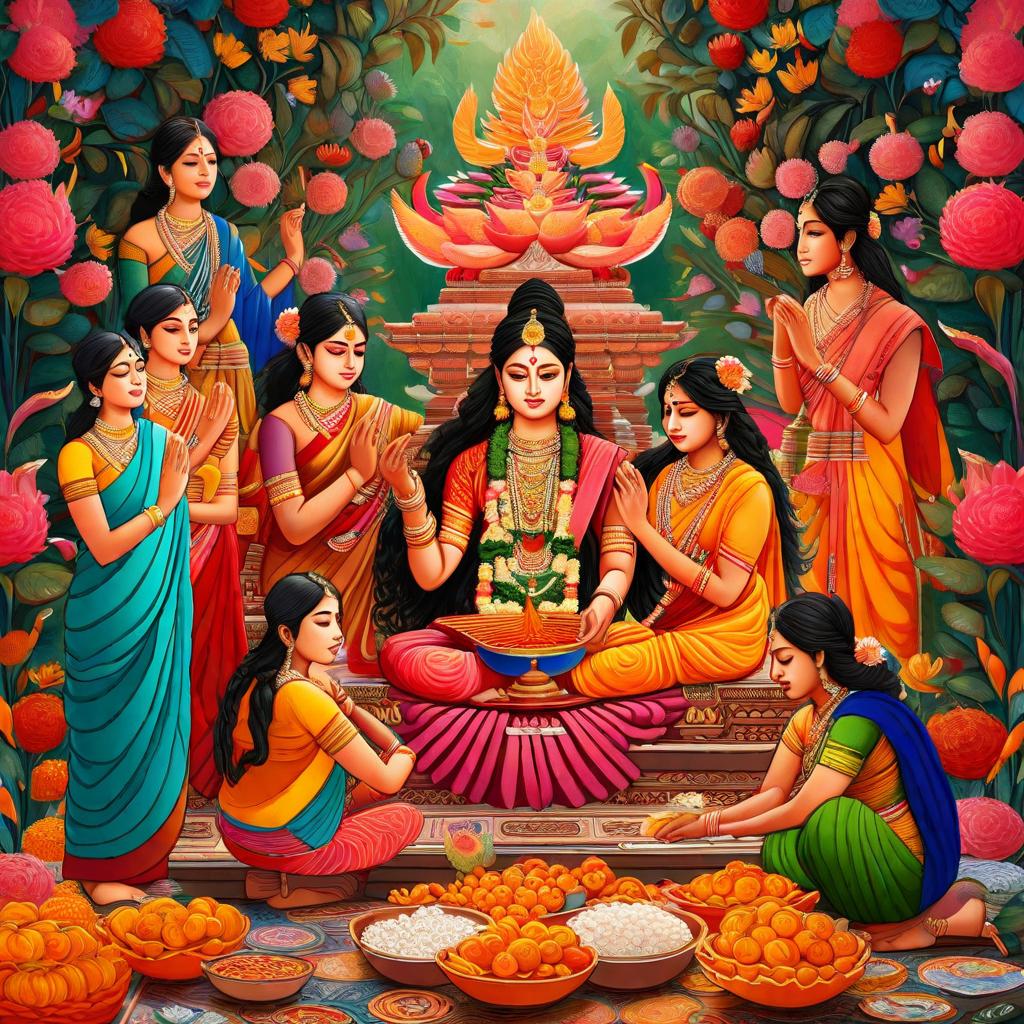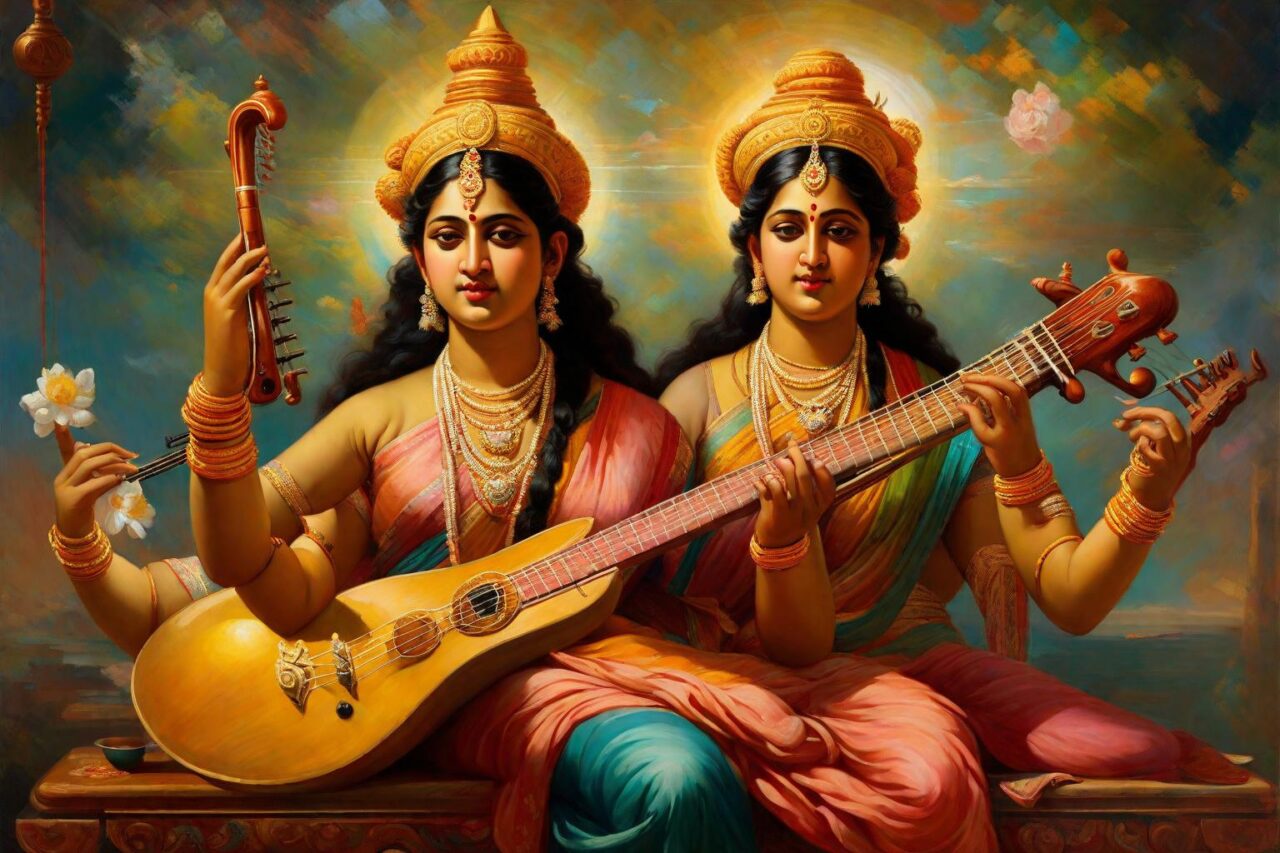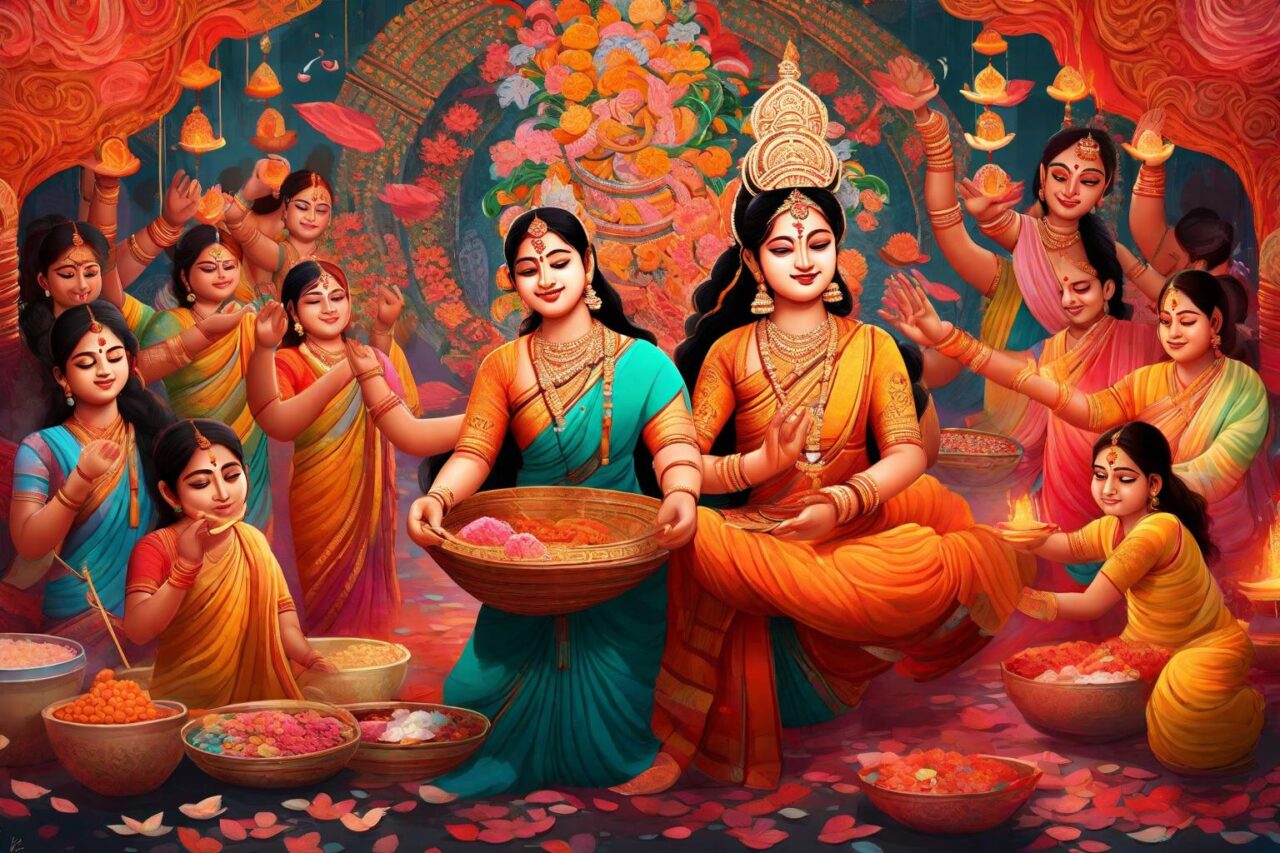Introduction
Saraswati Puja is a religious festival celebrated in Hinduism to honor Goddess Saraswati, the deity of knowledge and wisdom. This blog post delves into the significance of Saraswati Puja in Hindu mythology, its historical background, cultural importance, preparation, rituals, symbolism, celebrations, and the promotion of knowledge and enlightenment.
Background of Saraswati Puja

Saraswati Puja has its origins in ancient Hindu scriptures and has evolved over time. In Hindu mythology, Saraswati is revered as the goddess of learning, arts, and wisdom. She is the consort of Lord Brahma, the creator. The festival holds cultural importance in various regions of India, with distinct customs and practices.
Preparation for Saraswati Puja
Selecting the auspicious date and time for the puja

The celebration of Saraswati Puja is based on the Vedic lunar calendar. The date and time are chosen carefully to ensure alignment with astronomical and astrological considerations. Typically, the festival falls in late January or early February, during the Hindu month of Magh.
Setting up the puja altar and decorations

An altar, known as a “puja ghar,” is adorned with flowers, garlands, and religious symbols. A sacred space is created to house the idol or image of Goddess Saraswati. The color yellow, symbolizing knowledge and purity, is prominently used in the decorations.
Gathering the necessary materials and offerings

Devotees gather offerings such as fresh flowers, fruits, sweets, and traditional food items to be presented to the goddess during the puja. Additionally, books, musical instruments, and art supplies are placed near the altar to signify the importance of learning and creativity.
Rituals and Traditions

Saraswati Puja involves various rituals and traditions that vary slightly across different regions of India. Devotees perform worship rituals and recite mantras dedicated to Goddess Saraswati, seeking her blessings for wisdom and knowledge. Floral tributes, prayers, and musical performances are offered as acts of devotion. Educational activities are also an integral part of the festival, with students actively participating in seeking the goddess’s blessings for success in their studies.
The Symbolism of Goddess Saraswati

Goddess Saraswati is depicted as a graceful figure adorned in a white saree, symbolizing purity and enlightenment. She holds the ‘Veena,’ a musical instrument that symbolizes the harmony of knowledge and creative expression. Saraswati’s association with learning, arts, and wisdom highlights the importance of these aspects in Hindu culture.
Celebrations and Customs
Saraswati Puja is celebrated with great enthusiasm and fervor across different parts of India. Various regions have their unique customs and practices associated with the festival. Devotees dress in traditional attire, with yellow clothing being particularly popular. Community gatherings, processions, and cultural performances such as music, dance, and drama are organized to celebrate the occasion.
Knowledge and Enlightenment

The pursuit of knowledge and wisdom holds significant importance in Hindu philosophy. Saraswati Puja serves as a reminder to promote education and the values of learning and intellect in society. Through this festival, individuals are encouraged to develop a thirst for knowledge, enhance their creativity, and strive for personal and intellectual growth.
Summary

In conclusion, Saraswati Puja is a celebration that honors the Goddess of Knowledge, Saraswati. The festival’s historical background, cultural significance, preparation, rituals, symbolism, celebrations, and promotion of knowledge and enlightenment have been explored in this blog post. By participating in Saraswati Puja, individuals not only pay homage to the goddess but also reinforce the importance of education, learning, and wisdom in their lives.
FAQs (Frequently Asked Questions)
- What is the significance of Saraswati Puja in Hindu mythology?
- Saraswati Puja holds great significance in Hindu mythology as it venerates Goddess Saraswati, the deity of knowledge, arts, and wisdom. The festival serves as a reminder of the importance of education and the pursuit of knowledge in Hindu culture.
- How is Saraswati Puja celebrated in different parts of India?
- Saraswati Puja is celebrated with regional variations in different parts of India. While the core rituals remain the same, each region has its unique customs and practices associated with the festival.
- What are the traditional offerings and rituals during Saraswati Puja?
- Traditional offerings during Saraswati Puja include fresh flowers, fruits sweets, and traditional food items. Rituals involve the worship of the idol image of Goddess Saraswati, recitation of mantras, offering of prayers, and engaging in educational activities.
- What does the Goddess Saraswati symbolism?
- Goddess Saraswati symbolizes knowledge, arts, wisdom, and creativity. Her attire, musical instrument Veena, and association with learning emphasize the importance of education and intellectual pursuits.
- How does Saraswati Puja promote education and knowledge in society?
- Saraswati Puja promotes education and knowledge in society by emphasizing the value of learning, encouraging students to seek the goddess’s blessings for success in their studies, and fostering a cultural atmosphere that celebrates intellectual growth and creativity.